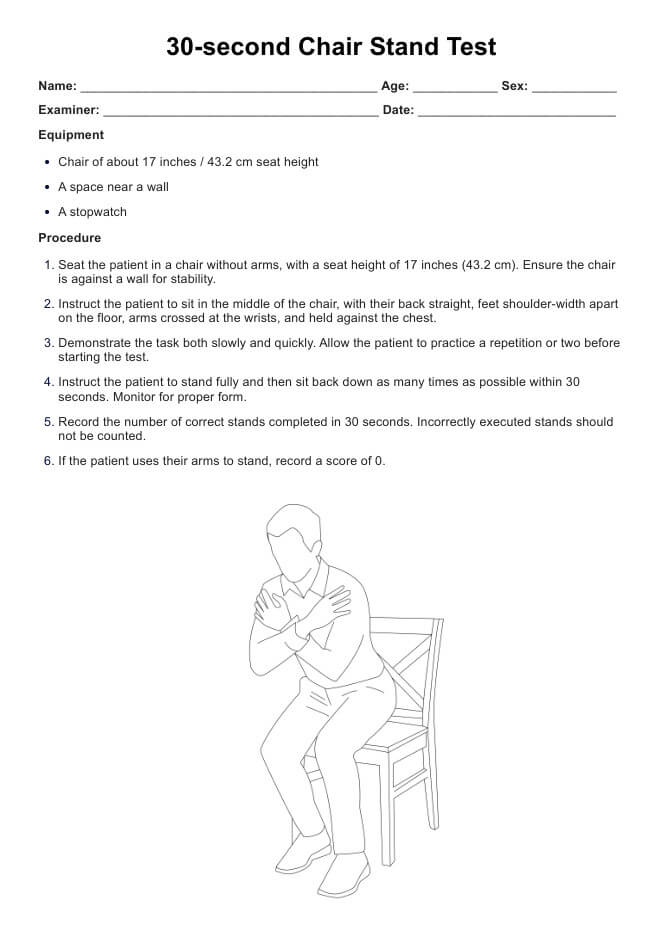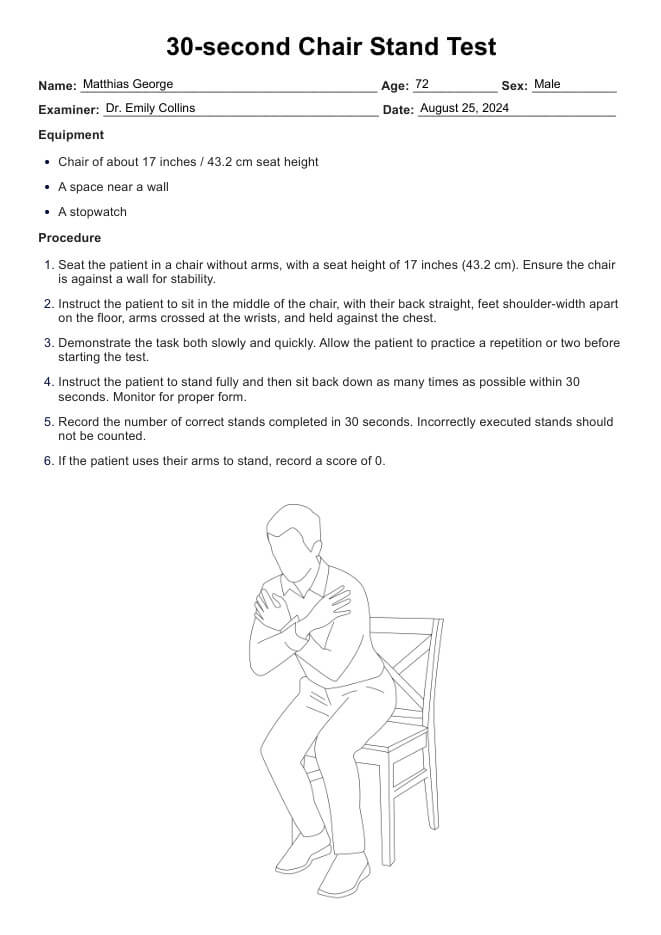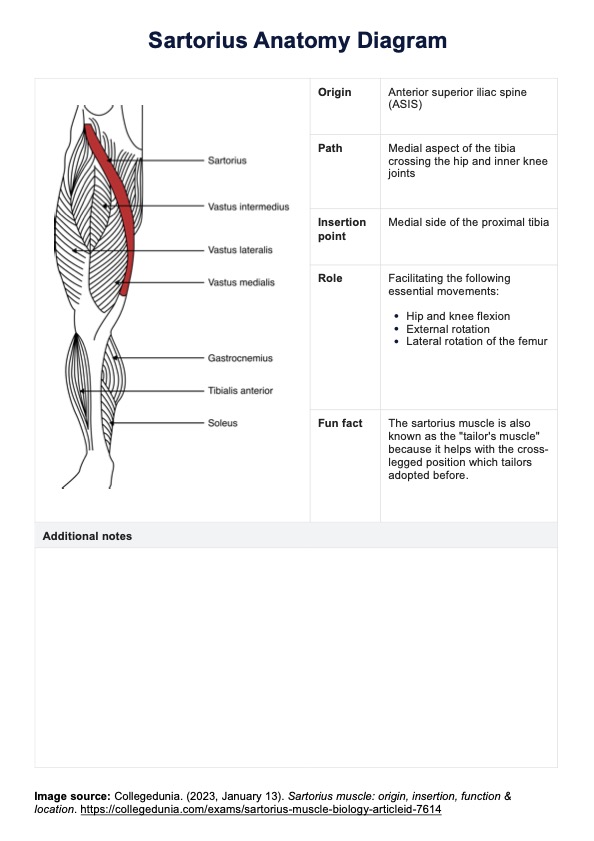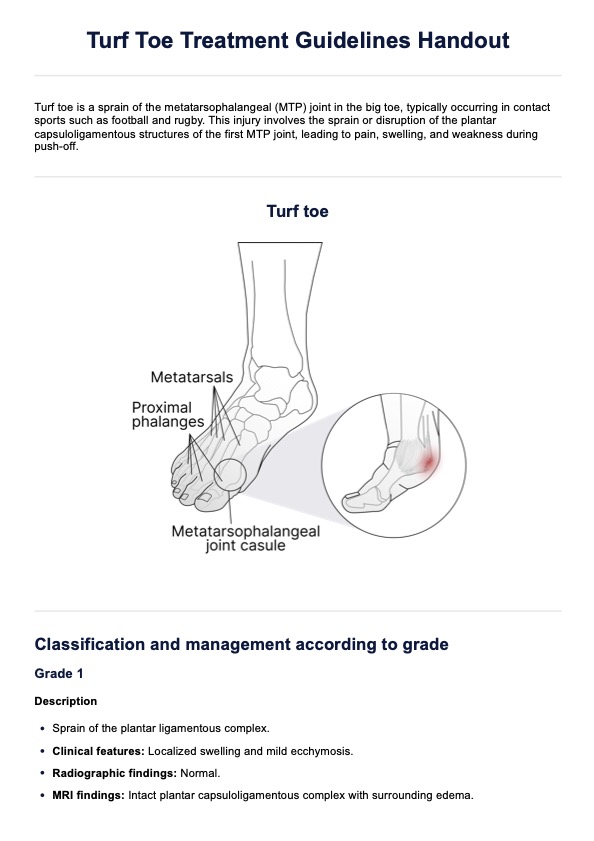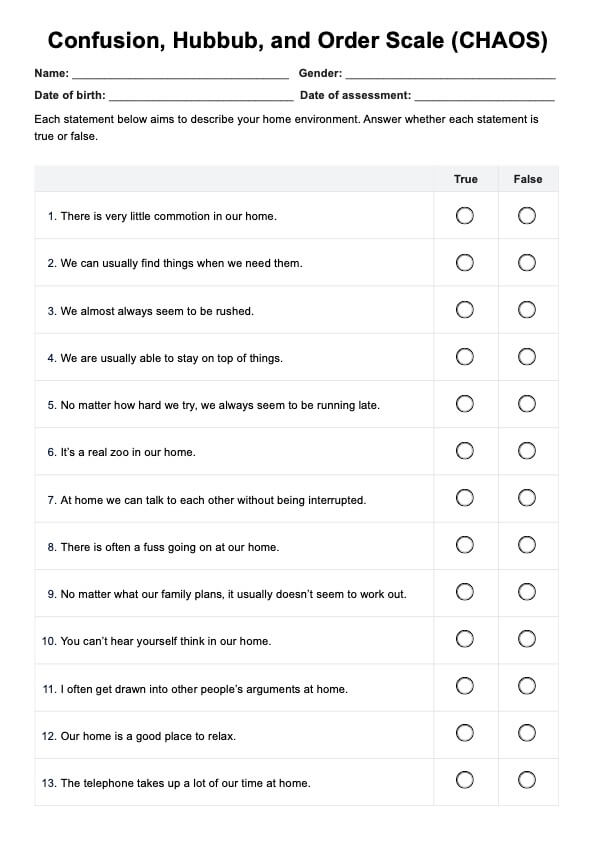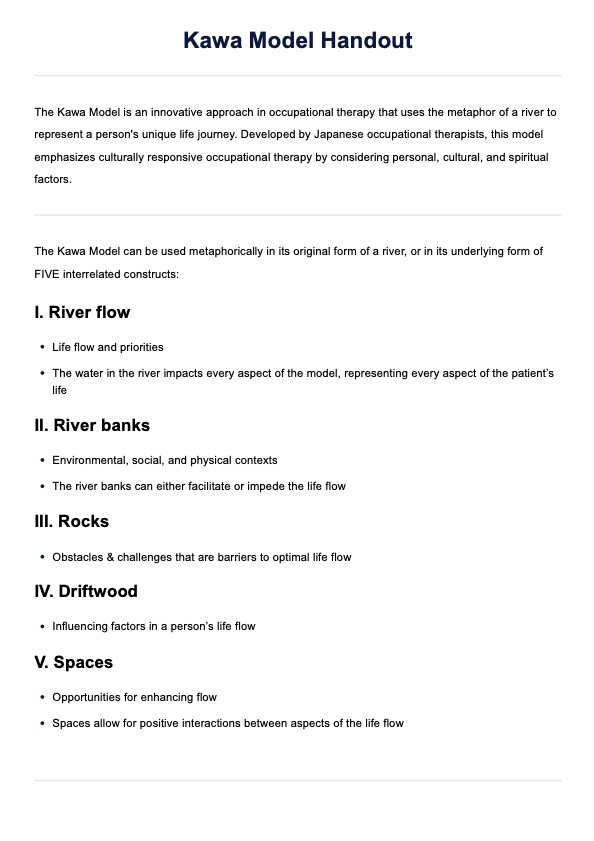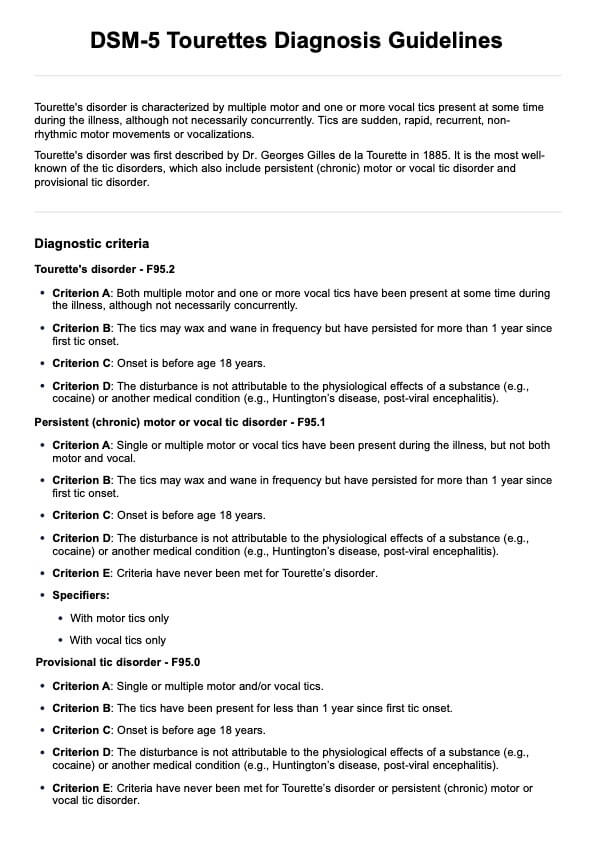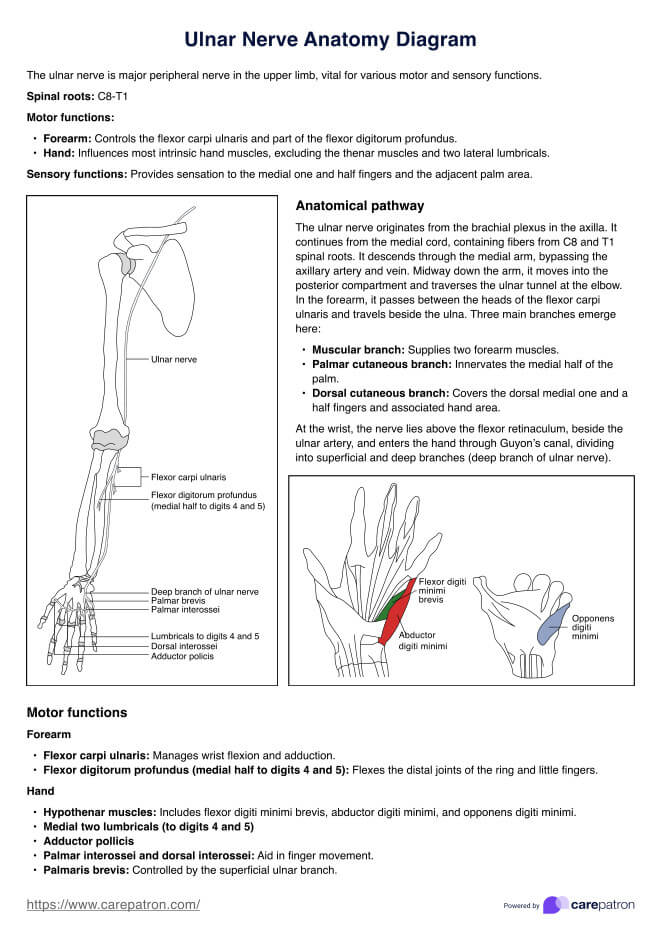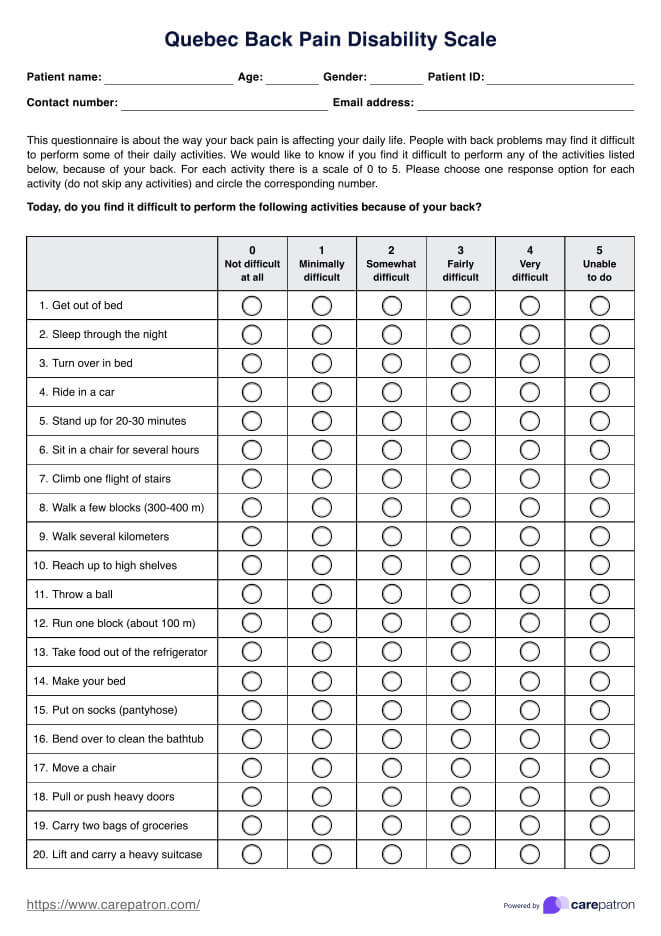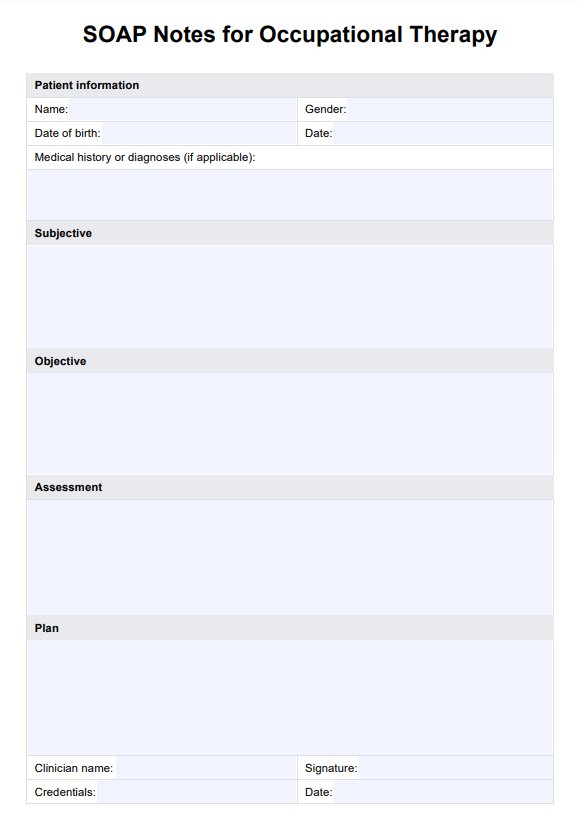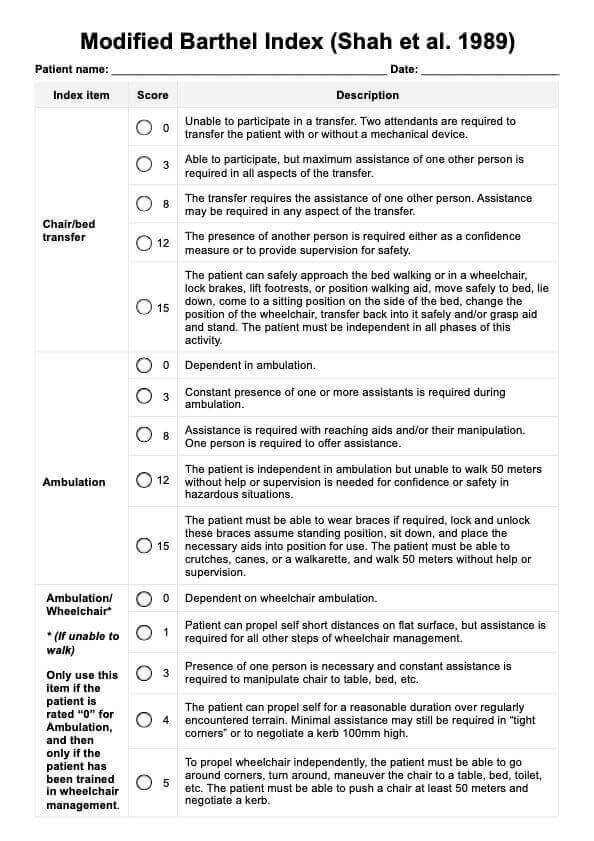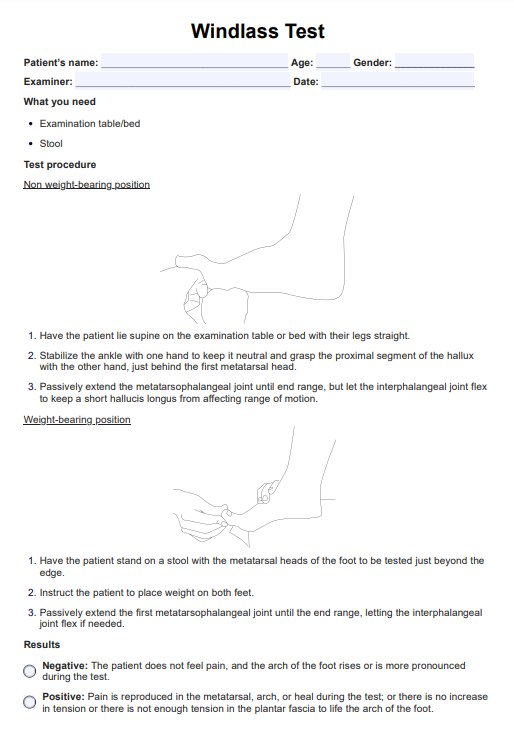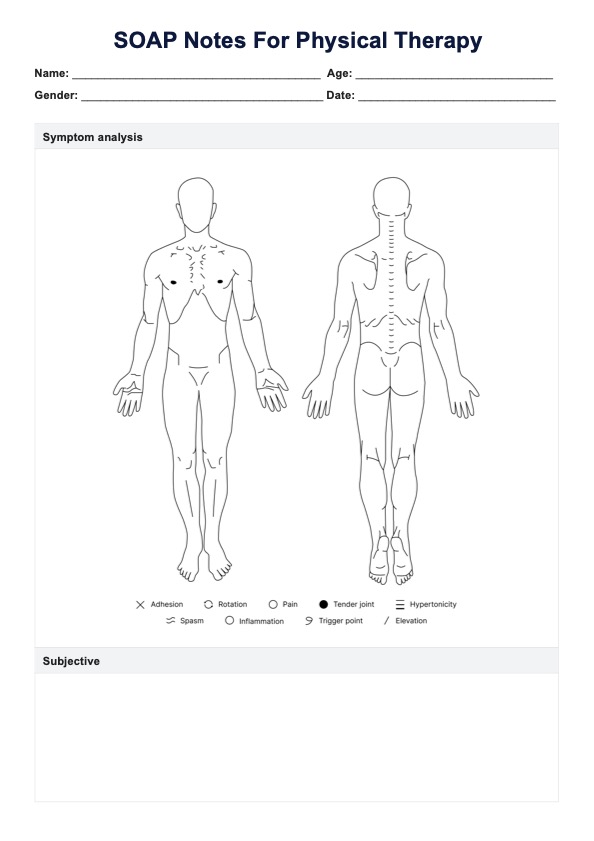30-second Chair Stand Test
Gauge your patient's leg strength and endurance with this 30-Second Chair Stand Test! It's a great and easy-to-conduct way to assess their risk of falling.


What is the 30-Second Chair Stand Test?
The 30-Second Chair Stand Test (30CST), also known as the 30-second sit-to-stand test, is a physical function assessment designed for older adults aged 60 and above. It evaluates leg strength and endurance, helping to identify the risk of falls in this age group. The test requires minimal equipment—a 17-inch tall chair without armrests and a timer. The chair must be positioned by a wall, facing away, to ensure safety during the test.
This assessment is straightforward to administer but can vary in difficulty depending on the individual being tested. The test involves the patient standing up from the chair without using their hands for support, repeating the action as many times as possible within 30 seconds. This simple yet effective test provides valuable insights into a patient's lower body strength and balance, which are crucial for preventing falls and maintaining mobility in older adults.
Is the 30-Second Chair Stand Test valid and reliable?
The 30-Second Chair Stand Test is a reliable and valid test for assessing lower body strength, as demonstrated by research. According to Jones, Rikli, & Beam (1999), the test showed high test-retest reliability, with intraclass correlations of 0.84 for men and 0.92 for women. There was also a moderately high correlation between chair-stand performance and maximum weight-adjusted leg-press performance for both men and women (r = 0.78 and 0.71, respectively), supporting its reliability and criterion validity as a measure of lower body strength. The performance in the chair stand decreased significantly across age groups in decades, from the 60s to the 70s to the 80s (p < 0.01), and was significantly lower for low-active participants compared to high-active participants (p < 0.0001).
In a study involving multiple functional tests by Lein et al. (2022), investigators measured anthropometric measurements of younger adults (mean age 25.1 ± 3.4 years, with body mass index sitting at 72.6 ± 16.1 kg for males and 47 for females). Where participants performed balance tasks, they performed an average of 33.0 ± 5.4 repetitions in the 30-Second Chair Stand Test. The study found some correlations between 30CST performance and the functional strength test assessed in the study; there is a negative association between 30CST performance and the 5x Sit-to-Stand Test (r=-0.79, p=0.01) and a positive association with lateral step-up test (LSUT) performances (r=0.51, p=0.01).
Additionally, the sufficiently active group performed significantly more 30CST repetitions than the insufficiently active group (mean difference = 2.5; p=0.04). However, it should be noted that this study bases concurrent and convergent validity on functional strength test scores, not a specific gold standard strength score measured by an isokinetic dynamometer.
30-second Chair Stand Test Template
30-second Chair Stand Test Example
How to use our 30-Second Chair Stand Test template
Our template contains the procedures of the original 30-Second Chair Stand Test. To effectively use the template, follow these steps.
Step 1: Access the template
Start by pressing the "Use template" button to open the 30-Second Chair Stand Test template in the Carepatron app. Here, you can customize it, fill it out, print it, or share it. You can also save a printable and fillable copy on your device's local drive by pressing "Download," but that PDF isn't as easy to customize.
Step 2: Conduct the test
Position the patient in a chair without armrests, ensuring the chair is stable and placed against a wall to prevent movement. Instruct the patient to stand up and sit down as many times as possible within 30 seconds without using their hands for support. Ensure the patient is wearing appropriate footwear and has a clear, non-slip surface to safely do as many full stands as possible. Monitor the patient closely during the test to prevent any loss of balance or injury.
Step 3: Analyze the results
After the test, the recorded data will be reviewed to assess the patient’s leg strength and risk of falling. The results will be compared to the normative values provided in the template to determine whether the patient’s performance is below average, average, or above average for their age group.
Step 4: Use results for planning
Based on the results, develop a personalized care plan addressing the patient’s falling risk. Consider additional tests or interventions such as physical therapy, strength training, or home safety modifications to improve the patient's lower body strength and balance if necessary.
Assessing the risk of falling and developing a treatment plan
After recording the number of times the patient reached a full-standing position, use the ranges indicated in the template to determine if their score is below average. If a patient's score falls below these averages, it indicates a higher risk of falling when standing up from a chair without assistance. This applies whether the regular or modified sit-to-stand test was used.
For patients with below-average scores, your treatment plan should address their elevated risk of falling. Consider how falling could impact their overall health and daily activities. Implement interventions to improve leg strength and balance, such as physical therapy exercises, assistive devices, or home safety modifications. Regular follow-up assessments are also essential to monitor progress and adjust the treatment plan.
When does one conduct the 30-Second Chair Stand Test?
Since this test is meant for older adults/elderly patients, it's best to administer this as soon as possible during consultations about mobility and ADLs.
Falling is a risk that all older adults have; it's best to check if they are actually at risk by having them take responsive functional outcome measures that can accurately predict fall status (such as this) as early as possible. This will allow you to prepare the necessary treatment plan to prevent them from getting into situations where they might accidentally fall.
An example of what you can include in such a plan is having them take geriatric physical therapy to help them improve their physical performance and find ways of attaining and maintaining physical independence if it's still possible.
When working with young adults or sufficiently active older adults, it’s important to consider their physical performance in the context of their daily activities and lifestyle. For these populations, additional physical performance tests, such as the 5x Sit-to-Stand Test or Lateral Step-Up Test, may provide further insights into their functional strength and endurance. When used alongside the 30-Second Chair Stand Test, these tests can help create a more comprehensive picture of an individual’s physical capabilities and potential fall risk. Training and rehabilitation professionals can also use the 30-Second Chair Stand Test for functional performance testing and to predict future functional performances.
This test can also be useful for young adults, sufficiently active older adults, and community-residing older adults. It is also useful, particularly for those who are recovering from surgery or injury.
References
Jones, C. J., Rikli, R. E., & Beam, W. C. (1999). A 30-s chair-stand test as a measure of lower body strength in community-residing older adults. Research Quarterly for Exercise and Sport, 70(2), 113–119. https://doi.org/10.1080/02701367.1999.10608028
Lein, D. H., Alotaibi, M., Almutairi, M., & Singh, H. (2022). Normative reference values and validity for the 30-second Chair-stand Test in healthy young adults. International Journal of Sports Physical Therapy, 17(5), 907–914. https://pubmed.ncbi.nlm.nih.gov/35949374/
Commonly asked questions
The protocol involves having the patient sit in a chair without armrests, stand up, and sit down as many times as possible within 30 seconds without using their hands for support. The healthcare professional monitors the performance and counts the number of successful stands.
Scoring 30-second sit-to-stand tests is based on the total number of times the patient can stand up fully within 30 seconds. The therapist records the count and compares it to the average scores for the patient's age group to assess their performance.
For adults aged 21-29, a good score is around 30-35 repetitions, while for older adults aged 60-64, a good score is 14-19 repetitions for men and 12-17 for women. Our template contains a more complete 30-second sit-to-stand test age norms table for older age groups, ranging from 65 to 95 years old.


